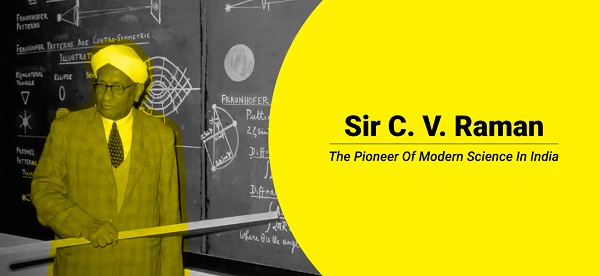GG News Bureau
New Delhi, 28th Feb. The date of 28 February is recorded in the history of the country and the world for many important reasons. This date has given a big gift to science in the form of the ‘Raman Effect’. National Science Day is celebrated for this achievement in the country on 28 February. This year the theme of Science Day is – ‘Science for a sustainable future.’ This day is dedicated to the famous physicist Chandrashekhar Venkata Raman. He discovered ‘Raman Effect’ on February 28, 1928. He was also awarded the Nobel Prize in 1930 for this important discovery. His discovery is still used in labs around the world. In 1986, the National Council for Science and Technical Communication had requested the Government of India to declare 28 February as National Science Day. National Science Day was celebrated for the first time in 1987 after getting permission from the government.
What is the Raman Effect?
The Raman Effect states that when light passes through a transparent substance, a change in the wavelength of the light is seen. That is, when a wave of light emerges from a material, some part of this light wave propagates in a direction which is different from the direction of the incoming light wave.
How was the Raman Effect discovered?
In 1921, CV Raman was sailing by ship to Britain. The stunning blue color of the water caught his eye from the ship’s deck. His next thought was, “Why is the sky and water blue?” When he began returning to Bharat that same year, he also brought some equipment with him. Using instruments, Raman conducted research on the sky and sea. He found that the ocean’s ability to split sunlight gives the appearance of blue ocean water. Raman conducted research on the nature of light scattering and splitting into multiple colors with his students back in his lab. He carried out more research on the separation of light into gases, liquids, and solids. The result of this research is called the Raman Effect.
On November 7, 1888, in Tiruchirappalli, Southern Bharat, Chandrasekhara Venkata Raman was born. He was raised in an academic environment from the beginning because his father was a mathematics and physics lecturer. He enrolled in Presidency College in Madras in 1902, and in 1904, he passed the B.A. exam and took home the gold medal in physics. Two years later, in 1907, he earned his M.A. degree with the highest honors.
During his time as a student, he conducted his initial studies in optics and acoustics, which have been his areas of focus for his entire career.
Raman joined the Indian Finance Department in 1907 because he thought a career in science would not offer the best opportunities at the time. Although his office duties took up most of his time, Raman was able to conduct experimental research in the laboratory of the Indian Association for the Cultivation of Science in Calcutta, where he eventually rose to the rank of Honorary Secretary in 1919.
He chose to accept the newly endowed Palit Chair of Physics at Calcutta University when it was offered to him in 1917. After spending fifteen years in Calcutta, he was appointed Professor at the Indian Institute of Science in Bangalore (1933–1948), and since 1948, he has served as Director of the Raman Institute of Research in Bangalore, which he founded and funded. In 1926, he also started the Indian Journal of Physics, which he currently edits. Raman was a founding sponsor of the Indian Academy of Sciences and has presided over the organization ever since. In addition, he started the academy’s Proceedings, which have published a lot of his writings. He also serves as president of the Current Science Association in Bangalore, which is responsible for publishing Current Science (Bharat).
The Indian Association for the Cultivation of Science published some of Raman’s early memoirs in its Bulletins (Bulls 6 and 11, which dealt with the “Maintenance of Vibrations,” and Bull. 15, 1918, which covered the theory of the violin family of musical instruments). In 1928, he wrote a piece for the 8th Volume of the Handbuch der Physik on the theory of musical instruments. His work on the “Molecular Diffraction of Light,” which he published in 1922, was the first in a series of studies he conducted with his collaborators. These studies eventually led to his discovery of the radiation effect that bears his name (February 28, 1928; see “A new radiation,” Indian J. Phys., 2 (1928) 387), which earned him the 1930 Nobel Prize in Physics.
Additional studies conducted by Raman included his theoretical and experimental research on the diffraction of light by ultrasonic and hypersonic acoustic waves (published 1934–1942) and the effects of X-rays on infrared vibrations in crystals exposed to normal light. In 1948, Raman took a fresh approach to solving fundamental issues in crystal dynamics by examining the spectroscopic behavior of crystals. His lab has been studying the structure and characteristics of diamonds as well as the structure and optical behavior of many iridescent materials, including pearls, agate, opal, labradorite, and pearly feldspar.
The physiology of human vision, electrical and magnetic anisotropy, and the optics of colloids have been some of his other interests.
Numerous honorary doctorates and memberships in scientific societies have been bestowed upon Raman. Early in his career, in 1924, he was chosen as a Fellow of the Royal Society, and in 1929, he received a knighthood.


Comments are closed.